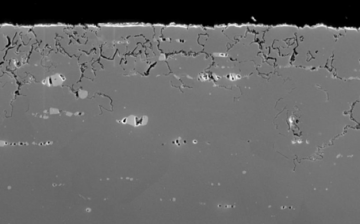
Achievement
Oak Ridge National Laboratory scientists aggregated more than 50 years of data showing puzzlingly inconsistent trends about corrosion of structural alloys in molten salts and analyzed the data set using modern data analysis techniques. Using correlation analysis and newly defined metric corrosion-resistance (CR) score that quantifies corrosion performance of a datum, they found one factor mattered most—salt purity. Typically, alloys used in high-temperature environments are high in chromium, which forms barrier layers that slow corrosion. However, these barriers are unstable in nuclear reactors and concentrating solar power plants that use molten salts for heat transfer and storage. Absent the protective barriers, alloy chromium leeches into the salt, aided by oxidizing impurities. The analysis result confirms that pure salts have much lower corrosion rate than impure salts.
Significance and Impact
Their published understanding will guide future experiments and models aimed at advancing robust, resilient materials.
Research Details
- Corrosion studies in fluoride and chloride salts from 1960 to 2016 are aggregated into a single dataset.
- Corrosion testing techniques and reviewed.
- Attributes of each study are processed and graphed to elucidate how they affect corrosion rates.
- Correlation analysis is performed to show how important factors correlate with corrosion in molten salts.
- We defined and used a new metric called corrosion-resistance (CR) score that quantifies corrosion performance of a datum.
Overview
Corrosion studies in molten fluoride and chloride salts were surveyed, and key data were aggregated into a single dataset. Studies were graphed by salt purity, temperature, sample material, container material, and experimental method (loop, capsule, crucible). To elucidate and quantify the factors that affect corrosion in molten salts, a data analysis using a newly-defined corrosion resistance score and a correlation analysis using techniques borrowed from machine learning were performed. It is shown that salt purity had the strongest correlation with corrosion rates in molten chlorides and fluorides.
Last Updated: January 15, 2021 - 12:36 pm